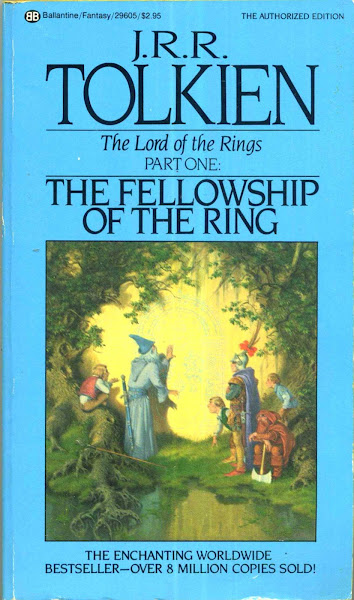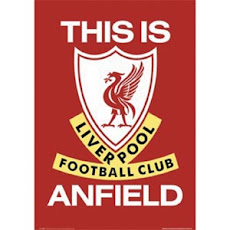Analyzing New Zealand’s masterful win over Gilas
by rick olivares
The 89-80 loss to New Zealand ended this Philippine team’s Olympic dream. To have come so close. Twice. There was the loss in Changsha and now at home in Manila. And that is perhaps the most painful one of all because so much has been hoped that the magic of 2013 would be replicated. Instead the MOA Arena cleared out quickly and across the Philippine spectrum, there’s extreme disappointment and sadness to some anger and venom hurled the team’s way.
At the ends of the day, once more, we’re the heartbreak kids.
Let’s examine the match that was.
First things first, what happened in our game against New Zealand? How can we have performed so poorly? Should Calvin Abueva been lined-up instead of someone else?
Rather than simply ask why we played so bad, the question should be, what did New Zealand do right?
You have to give them a lot of credit for a sound game plan that they executed up to the end BRILLIANTLY. They also had the good fortune of scouting the Philippines during its match versus France and they also played their first match. Well, conversely, now France knows what they can do.
And it started out with defense.
The Tall Blacks packed the paint, double-teamed Andray Blatche at every opportunity once he got down in the post. The second player who doubled weaved back and forth while looking for cutters (what Troy Rosario did versus France sliding up the middle). For example, Isaac Fotu rotated out to the corner where a Filipino shooter was, that player who initially doubled Blatche remained in the middle. Almost at all times, there was a person in the middle to protect the lane. If Gilas scored 11 fastbreak points versus France, they only had five against NZ.
The Tall Blacks average the same height as Gilas (6’5”) but they primarily played their taller players. When Blatche or Fajardo were forced farther out from the shaded lane, he had to throw higher outlet passes. Case in point, that pass to Terrence Romeo on the left corner. It was higher that by the time he landed after fielding the pass, a Tall Blacks defender was on him. No chance for an open shot.
New Zealand also did well in stopping the drives to the basket. Jayson Castro didn’t have much of a clear lane and was often blocked or forced to pass.
Terrence Romeo and Ray Parks also were stopped because of the height, length, and athleticism of NZ. Save for Andray Blatche’s three-point attempts and Jeff Chan’s early shots, NZ had a hand in everyone’s face and challenged every shot. Conversely, they made great use of screens to get wide open looks.
Did you see that bit of great defense played by Shea Ili on Castro? No hands. If you ask me, he was an unsung hero for NZ.
Turnovers:
New Zealand 11
Philippines 14
Points from turnovers:
New Zealand 16
Philippines 8
Rebounds:
36-even
Steals:
New Zealand 7
Philippines 3
Blocked shots:
New Zealand 5
Philippines 2
Offensively, they attacked our guards. The Webster brothers were a handful. Corey and Tai were not only taller and more athletic, they were just as fast. None of Terrence Romeo’s crossover attempts fooled them. They combined for 48 points and only had two fouls between them.
Heck, they attacked everyone! That saw a lot of players picking up two quick and early fouls messing up the rotation. When the Philippines couldn’t break the ball screen defense, they relied on the outside shot again. When the guns went silent there was not much offense to be found and the home team went back to isolation and one-on-one plays.
Essentially, NZ took us out of our game plan early on with an amazing display of discipline on offense and defense. And we didn’t have any answers for that.
Furthermore, Gilas got into early penalty situation in the first, second, and fourth periods. New Zealand got into early foul trouble in the third which is when Andray Blatche and June Mar Fajardo got going. But they weathered multiple storms — Jeff Chan’s early salvo, Castro waxing hot, and Gilas’ twin towers explosion. With the lead down 60-58 and 62-60, Tai Webster scored on an and-one. With Dray momentarily out of the game due to a scratch on his hand, Isaac Fotu immediately attacked a cold Ranidel De Ocampo for a bucket. Suddenly, the lead was back up to seven, 67-60, with six left to play.
The Tall Blacks dominated the paint and scored 34 inside points to the Philippines’ 24.
You have to admire New Zealand's composure. At no time did they panic. Even when the crowd got into the game, they remained unfazed. They simply executed their game plan. Ran it until the final buzzer.
You can sum up New Zealand’s game plan into these:
Clog the lane and do not give Andray Blatche a chance to dominate inside. He can have the three-point shot but that leaves Gilas with no rebounders. Put a lot of defenders so there is no chance for slashers like Romeo, Parks, and Castro to wreak havoc.
Locate the primary scorers and be aware of the kick outs and rotate immediately.
Attack the inside offensively.
Patiently work the offense.
What could have we done? What didn’t we do?
As in the match versus France, Gilas needed four things — to have a good start, to have those triples find the bottom of the net, battle inside, and keep the game close.
Good start, not exactly because a lot of players were in early foul trouble and that messed up the rotation.
Once more, Gilas drilled 11 triples; same number against the French. This time New Zealand had eight to France’s five three-pointers made. So they pretty much answered everything we threw at them.
Battle inside, we might be even in rebounds but they scored more points and went to the free throw line more (26-21 attempts).
Keep the game close — we sort of but they always had answers to every run.
At the start of the second half, I was looking for the pick and roll, screens. I still didn’t see it I was hoping for quicker play, quicker passing. We might have not dominated the boards but you can still try to push the pace. But NZ’s transition defense prevented that.
When the twin towers of Blatche and Fajardo cut that lead down; New Zealand continued to send multiple players trying to force a turnover. And it worked. They just had to work harder at boxing out, rebounding, trying to defend the shot rather than give open looks.
If you look at what Canada did to Turkey, they played a faster game that hurt the Turks who prefer a half court game. Senegal took the Canadians out of their comfort zone as they were taller and more athletic and the Lions nearly beat them.
What can we learn from these losses?
First and foremost, France and New Zealand are ranked higher than us. There is no shame in losing to higher seeded teams homecort advantage aside. That is what good and great teams do, they win everywhere. While we may be good in our region, we have to remember that we are on the world stage and so we have made great strides. Homecourt advantage helps but it doesn’t guarantee a win. Ask the Golden State Warriors.
And maybe we have to remember that we really have to hurdle our regional foes before making it elsewhere.
France and New Zealand are great reading the defenses. They made quick reads and played with exceptional discipline. You can see them always talking to each other on the court.
One can say that France is experienced. Sure they have it. Conversely, New Zealand has a lot of very young players; new call-ups. So what was it — in my opinion, the bottom line is their team discipline on and off the court. On offense and defense.
Remember that part where NZ kept weaving up high in the fourth period as they were unable to get inside or find an open shot? That was an incredible sequence. Eventually, someone got free for a shot. Bang. Amazing. You have to execute and trust the system. Many coaches talk about that in the locker room. Trust the system and work for it.
The night before the match versus France, Gilas coach Tab Baldwin spoke about a lot bad habits in terms of play and there wasn’t enough time to correct what was a lifetime of bad habits.
In a conversation with Les Bleus’ Nando De Colo after the France game, he said that the Philippines has a lot of very good one-on-one players but they do not play as a team.
Watching these teams execute — France and New Zealand — there is nothing fancy. No crossovers or fancy moves to please the crowd. Just simple fundamental basketball. Baldwin was even doing this with Ateneo, deconstructing the bad habits and going back to the basics.
I thought that we were looking for the highlight plays, a staple of Pinoy basketball. Too much isolation. The highlight reel style of play. The Americans can get away with that because they are that good.
Having said that, we should look at how European basketball has changed the NBA and the American game forever — patiently moving the ball until someone is open. Constant movement. Players who are tall yet can play like guards or small forwards. Essentially, a complete player who plays simple hoops.
And France and New Zealand played simple, beautiful, and fundamental basketball. Watching Tony Parker play — it’s simple but effective. Nothing fancy. And this dude popularized the teardrop. Watching Parker, here is a Picasso of the hardcourt serving up a painful lesson in simple yet ever so effective basketball.
And lastly, maybe in the composition of the team. We need players who are multi-faceted. Tall players who are adept at post play and have guard skills. And we really need to commit to the national team rather than being selfish about sending players only in the off-season.
It’s a painful loss and there will be more to come. I agree with Tab Baldwin, for the Philippines to win in high level games there must be continuous exposure to this type of competition. Its a painful lesson but this will only be a lesson well learned if we do something about it.










While I definitely I agree with your points, I just can't hide my frustration about the defense of Andray Blatche especially on the first half. No effort.
ReplyDeleteFurthermore, I don't have a brilliant mind in terms of coaching, but not fielding Japeth during the France Game definitely hurt Gilas, not only Gilas, but it affected the confidence of Japeth going into the NZ Game (you can make an argument that you have to be ready everytime your no. is called). But you have to give guys the exposure and feel for the tournament. I really believe Japeth can really help in a big way especially as a weak side defender and dropping perimeter shots just like he did during the Turkey Tune up.
And there's RDO, when our offense was suffering, I really hoped for RDO but he was benched.
Then there's the immaturity of Romeo when Junemar was feeling it in the post, Junemar never touched the ball.
Coach Tab is a good international coach, but as a fan, I am not happy with his rotation (Troy is good but he played too much) and of course, Andray, I didn't like his defense at all; not to mention that he brings the ball down a lot! we are way faster when Castro/Ray/Terrence/Gabe brings the ball. I hope next time, when we will get a naturalized player, i hope a player with a defense-first mentality. Because we have a bunch of scorers already.
I'am a die hard fan. Just my 2 cents. :)